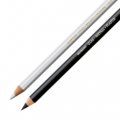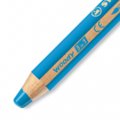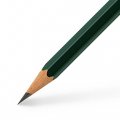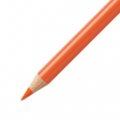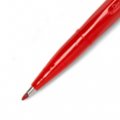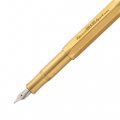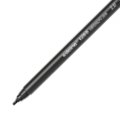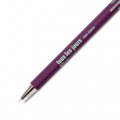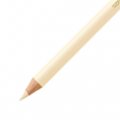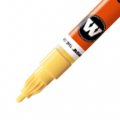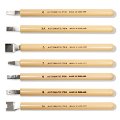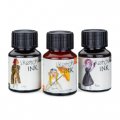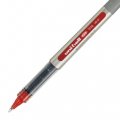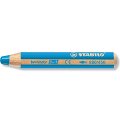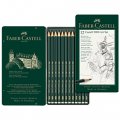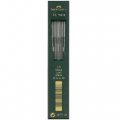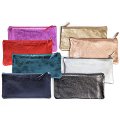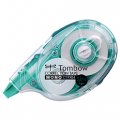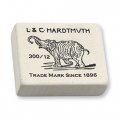Fountain Pens & Accessories
Information about fountain pens & accessories
A fountain pen is the classic writing utensil – it stands for beautiful, elaborate handwriting and the assertion that a fountain pen contributes mightily to the uniqueness of one’s handwriting is not without merit. This suggests, then, that anyone using a fountain pen takes more time when writing and is not just interested in putting something down on paper. People who write with fountain pens make more of an effort – with the singular exception of some students who find them more difficult to wield and torturous to use. Grammar school kids are still taught writing through the use of a fountain pen because writing with the sensitive nib helps to develop fine motor skills and demands discipline as well as a correct positioning of the hand when writing and this can be trained through continued use.
The most important part of a fountain pen is the nib. One type of nib being sold today is made of gold; that version is found on expensive pens and is somewhat more elastic during the writing process, i.e., softer. In addition, there are stainless steel nibs in various widths but these, when compared to gold nibs in terms of writing comfort (there is some disagreement about this), fall somewhat short.
The nibs consist of two tines that are separated by a slit that runs as far as the tip. The pen tip is, in both versions, round or nearly round – this is necessary so that the pen will not produce any scratching resistance when writing in all directions, whether being pushed or pulled (exception: calligraphy nibs, which are moved in less directions). For this purpose a small ball made of a particularly hard and therefore wear-and-tear resistant metal (e.g. iridium) is welded to the tip.
A nib will over a short period of time conform to the individual writing style of its owner as far as pressure and writing angle is concerned; the split nib bends accordingly. For this reason you should never lend your fountain pen to anyone so that its “configuration” will remain true to your particular style of writing.
More than 90 percent of nibs are M-nibs – that is the standard width for right-handers, which is why we sell all our pens with just that nib attached. Other types of nibs, including a special one for lefthanders, are available as accessories.
Fountain pens do not tend to splotch and they don’t leak either. Why is it, then, that so often after taking off the cap of a fountain pen the grip area looks like a bloodbath only with ink instead? The reason for this is, if you can believe it, the nervousness of the student or person who owns it. Here’s what happens: through a continuous nervous opening and closing, i.e. pulling and pushing of the pen’s cap, a small amount of ink escapes from the nib tip because with the pulling off of the cap the fountain pen tip is no longer in a closed system – and a small amount of suction is produced. If this is repeated many times, a drop will form. This drop of ink is then released into the cap and, voila, you have a mess! If the pen’s owner can find some inner peace or if he tears his eraser into pieces instead of fiddling with the cap, the mess will be avoided.
A few words about Lamy: This company has been designing and manufacturing writing utensils in Heidelberg since 1952 and is a brand known all over the world – in the meantime Lamy even has its own stores in China. To this day, all the parts, from the nibs to the plastic or stainless steel barrels, are produced and assembled on location.
